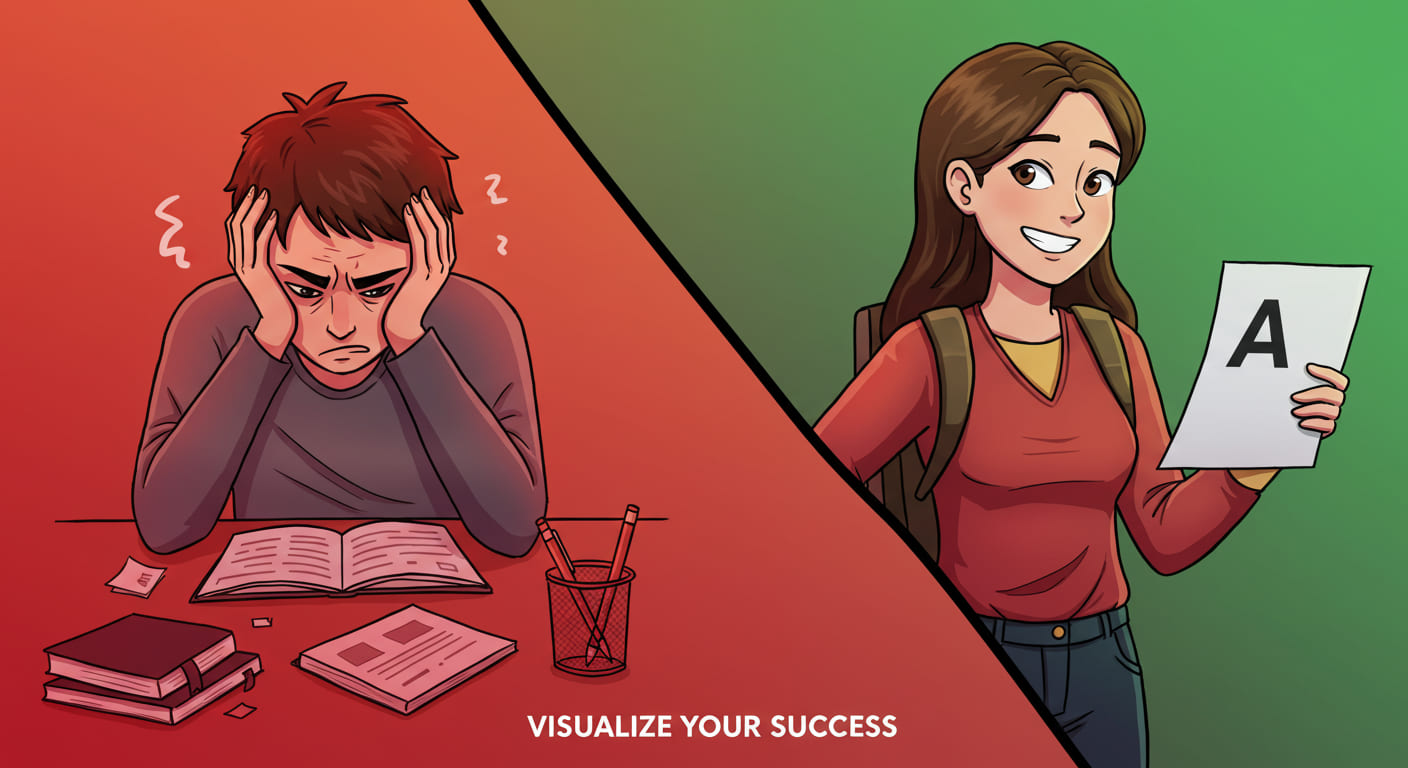Ever sat in class, staring at a textbook, wondering how you’ll ever nail that exam, land that internship, or just feel good about where you’re headed? We’ve all been there—caught in a loop of doubt, where goals feel like distant stars. But what if you could train your brain to see opportunities, boost your confidence, and make those dreams feel closer? That’s where visualization comes in, a science-backed skill that’s like a mental gym for your ambitions. This article is your guide to mastering visualization as a student, showing you how to rewire your mind for success, one vivid image at a time. Ready to see your goals come to life? Let’s dive in.
Why Your Brain Needs a New Filter
Your brain is like a super-smart bouncer at a club, deciding what gets in and what stays out. Scientists call this bouncer the reticular activating system (RAS), a network of neurons that filters information based on what you believe about yourself and the world. If you think you’re bad at math, your RAS will spotlight every wrong answer to prove you right. But here’s the good news: you can reprogram this filter. Visualization trains your brain to notice opportunities—like that study group invite or a professor’s office hours—that align with your goals. It’s like giving your brain a new playlist, one that pumps you up instead of dragging you down.
The Science of Seeing Success
Why does visualization work? Your brain doesn’t know the difference between a real memory and one you vividly imagine. When you picture acing a presentation—feeling the confidence, hearing the applause—your brain encodes it like it happened. Research shows this builds skills and confidence, just as if you’d practiced in real life. It’s like a mental rehearsal that preps you for the big game. So, when you visualize crushing that group project, you’re not just daydreaming—you’re wiring your brain for success.
Step 1: Close Your Eyes, See the Scene
Ready to try it? Start with a goal, like improving your grades. Close your eyes (yes, really!) and paint a specific picture. See yourself in the library, focused, flipping through notes. Picture the “A” on your exam, the high-five from a friend. Make it vivid—where are you? What’s around you? This isn’t vague daydreaming; it’s a mental movie where you’re the star. Spend 30 seconds daily on this, and you’ll start noticing study tips or resources you missed before. It’s like tuning your brain to a success frequency.
Step 2: Feel the Win
Visualization isn’t just about pictures—it’s about emotions. As you imagine that “A” or landing a summer job, focus on how it feels. Proud? Relieved? Pumped? These positive emotions are the secret sauce. They tell your brain, “This is worth chasing.” Research backs this: pairing vivid images with feelings like joy or pride strengthens your confidence and motivation. So, when you visualize, don’t just see it—feel it. How amazing will it be to walk out of that exam knowing you nailed it?
Spotting Opportunities Everywhere
Once you start visualizing, your RAS gets to work, acting like a spotlight for possibilities. Maybe you’ll notice a classmate’s study hack or feel bold enough to ask a professor for feedback. This is your brain’s filter shifting, seeking evidence that you’re capable, not stuck. It’s why visualization is so powerful for students—those small wins, like joining a club or speaking up in class, start to stack up. Ever wonder how some people seem to “get lucky” with opportunities? They’re likely visualizing, and you can too.
Building Skills Without Moving a Muscle
Here’s a wild fact: studies show visualization can build skills almost as effectively as physical practice. Picture yourself nailing a speech—your tone, your gestures, the audience nodding. Your brain logs it as practice, boosting your confidence and ability when the moment comes. For students, this means you can “rehearse” tough tasks, like tackling a coding project or leading a group, in your mind. It’s like a free, portable training session you can do anywhere, anytime.
Key Takeaways
- Rewire Your Brain: Visualization reprograms your RAS to spot opportunities that match your goals.
- Science-Backed Wins: Your brain treats vivid mental images as real, boosting confidence and skills.
- See It Clearly: Close your eyes and picture specific scenes of success, like acing an exam or landing a role.
- Feel the Joy: Pair images with positive emotions to supercharge your motivation.
- Notice More: A tuned RAS helps you find resources and chances you’d otherwise miss.
- Practice Anywhere: Mental rehearsals build real skills, no extra time required.
Conclusion: Your Dreams Deserve 30 Seconds
Visualization isn’t a one-size-fits-all magic trick, and that’s okay. Some days, you might picture a perfect study session; others, just a small win, like finishing a chapter. What matters is giving your dreams a moment to shine. By spending just 30 seconds a day imagining your success—feeling the pride, seeing the results—you’re training your brain to work for you, not against you. So, why not start today? Close your eyes, picture one goal, and feel the thrill of making it real. Your future self is cheering you on—go show the world what you’ve got!
